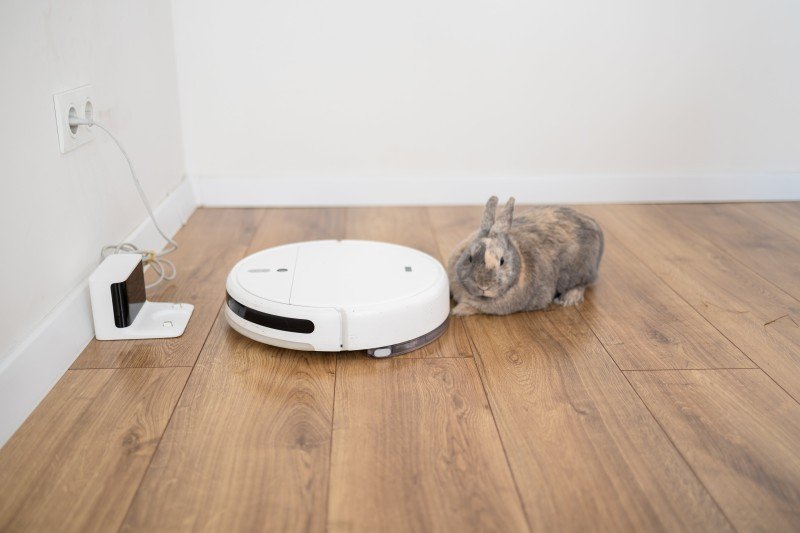A Rewind The Conversations People Had About Smart Vacuum 20 Years Ago

The Rise of Smart Vacuums: Revolutionizing Home Cleaning
In recent years, the emergence of smart innovation has actually transformed various elements of life, and home cleaning is no exception. Smart vacuums, frequently described as robotic vacuums, boast advanced functions such as automated cleaning patterns, scheduling through mobile applications, and combination with smart home systems. This article checks out the innovation behind smart vacuums, their benefits, possible disadvantages, and responds to some often asked concerns.
Comprehending Smart Vacuum Technology
Smart vacuums use a combination of sensing units, cams, and expert system to navigate through homes. They can recognize obstacles, avoid dropping stairs, and efficiently map the design of a room to make sure extensive cleaning. Here are some key elements that make these devices intelligent:
Key Features of Smart Vacuums
- Navigation Systems: Utilizing laser mapping or cam vision technologies, smart vacuums produce a map of a home's design, allowing them to tidy systematically rather than randomly.
- Scheduling and Remote Control: Many devices come with smartphone apps or voice assistant capabilities, allowing users to start, stop, or schedule cleaning sessions remotely.
- Diverse Cleaning Modes: Smart vacuums typically include numerous cleaning modes like area cleaning, edge cleaning, and a general cleaning cycle tailored to different locations and surface areas.
- Self-Charging: When the battery runs low, smart vacuums can autonomously return to their charging stations, ensuring they're always all set for the next cleaning session.
- Smart Home Integration: Compatibility with platforms like Amazon Alexa or Google Home enables users to control their vacuums with voice commands.
The Benefits of Smart Vacuums
Smart vacuums provide many benefits that cater to modern lifestyles. Some of the advantages include:
- Time-Saving: Automated cleaning suggests property owners can invest less time managing household tasks.
- Convenience: Scheduling cleansings enables upkeep to continue even when occupants are away.
- Thorough Cleaning: Advanced sensors make it possible for smart vacuums to navigate difficult-to-reach locations, guaranteeing an extensive cleaning.
- Pet-Friendly Options: Many designs are developed to handle pet hair and dander, alleviating the problem for family pet owners.
Smart Vacuum Comparison Table
| Function | Budget Models | Mid-Range Models | High-End Models |
|---|---|---|---|
| Price Range | ₤ 100 - ₤ 300 | ₤ 300 - ₤ 600 | ₤ 600 - ₤ 1,000+ |
| Navigation | Fundamental | Laser Mapping | Advanced Laser & & Camera-Enabled |
| Mobile App Control | No | Yes | Yes |
| Battery Life | 60-90 minutes | 90-120 minutes | 120+ minutes |
| Family Pet Hair Removal | Fundamental | Moderate | Outstanding |
| Upkeep Alerts | No | Yes | Yes |
| Smart Home Compatibility | Limited | Yes | Yes |
Possible Drawbacks of Smart Vacuums
Regardless of the many advantages, there are some limitations to think about when buying a smart vacuum:
- Initial Cost: Smart vacuums can be more expensive than traditional vacuums, possibly making them less accessible for budget-conscious customers.
- Upkeep Requirements: While the devices do the cleaning, they still need regular upkeep, such as emptying dustbins and cleaning brushes.
- Minimal Capabilities: Some designs might struggle with heavy particles or deep carpet cleaning and may be best used as an extra cleaning tool.
- Connection Issues: Depending on Wi-Fi strength and home layout, some users might experience difficulties with app connectivity or voice commands.
Smart Vacuums vs. Traditional Vacuums
When deciding in between smart vacuums and standard vacuum cleaners, it's crucial to weigh the advantages and disadvantages of each choice.
Standard Vacuum Advantages
- Powerful Suction: Generally, traditional vacuums supply more effective suction and can manage bigger messes.
- Versatility: They can much better manage a variety of surface areas, consisting of upholstery and stairs.
- Lower Upfront Costs: Traditional vacuums come in a vast array of rates, making them accessible for lots of households.
Smart Vacuum Advantages
- Automated Cleaning: They allow for simple and easy, scheduled cleaning without human intervention.
- Area Saving: Smart vacuums are compact and can be quickly stored in little spaces.
- Technological Proficiency: Many models provide features like mapping, app control, and voice support.
Often Asked Questions About Smart Vacuums
1. How reliable are smart vacuums in cleaning homes?
Smart vacuums are usually efficient for routine cleaning of dirt and debris, particularly on difficult floors and low-pile carpets. Nevertheless, they may not change deep cleaning for carpets.
2. Can smart vacuums deal with pet hair?
Yes, numerous smart vacuums are particularly designed with effective suction and brush systems to take on pet hair, making them a fantastic option for animal owners.
3. How do I keep my smart vacuum?
Regular maintenance includes clearing the dustbin, cleaning the filters, and inspecting the brushes. Refer to the producer's standards for specific upkeep pointers.
4. Are kingquirin.top ?
Smart vacuums generally produce less noise than traditional vacuums, making them a quieter option for daily cleaning tasks.
5. Do smart vacuums work on carpet?
Numerous smart vacuums can clean up low to medium-pile carpets successfully, but performance might vary by design. Always inspect the specifications to ensure optimum efficiency on your carpets.
Smart vacuums represent the crossway of convenience and innovation in modern home cleaning. With features that not just streamline everyday tasks however likewise improve efficiency, they are rapidly becoming a staple in modern families. While they might not completely change traditional vacuum cleaners, smart vacuums serve as an invaluable tool for preserving a clean and neat home with very little effort. As innovation continues to advance, it is most likely that these devices will only become more efficient and available for all customers.

